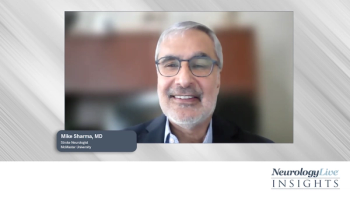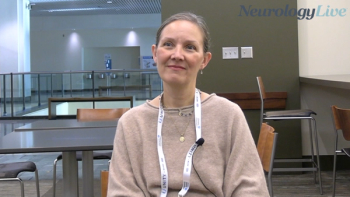
Research Needs Impede Neonatal Seizure Diagnosis, Optimal Treatment Regimen

Solomon L Moshe, MD, and Elissa Yozawitz, MD, from Montefiore Medical Center, discussed ways of reducing misdiagnosis of neonatal seizures and the future work needed to be done in this space.
This is a 2-part interview. To view part 1,
Recent modifications to the 2017 International League Against Epilepsy (ILAE) Classification of Seizures and Epilepsies emphasized the role of electroencephalography (EEG) in the diagnosis of seizures in the neonate and included a classification of seizure types relevant to this age group. The report published by the Neonatal Seizures Task Force, which was established by the ILAE, aimed to lower rates of misdiagnosis.
Seizures are considered focal at onset, and thus a division into focal and generalized is unnecessary, according to the study authors. Understanding more about neonatal seizures and how to properly treat them can be difficult because of the numerous barriers that obstruct the process of conducting randomized controlled trials for such a young patient group.
ILAE past president Solomon L Moshe, MD, Charles Frost Chair in Neurosurgery and Neurology, and Elissa Yozawitz, MD, director of Neonatal Neurology, both at
NeurologyLive: What are specific ways clinicians can reduce the probability of misdiagnosis? Do you feel as though this is an area that needs improvements or more research?
Elissa Yozawitz, MD: We’re bringing in EEG at the top of this classification because the more we learn about neonatal seizures, the more EEGs we’re doing, we begin to realize that all these movements that babies are doing are not necessarily seizures. Even in REM sleep, they have all these funny movements that may look like a seizure without an EEG. You can’t tell if they’re a seizure or not, so the EEG confirmation is very key to making the correct diagnosis. If it’s not available, clonic seizures are most likely to be accurately diagnosed clinically. For the more subtle types of seizures, we need the EEG to determine what’s a seizure and what’s not.
Solomon Moshe, MD: After you go through the first test, you have to consider what the ideologies are. The spasms or consequential seizures that are more related to genetic diseases, and that we’ll investigate more because some of the seizure types we see in newborns are only there for a few days, and then they go away. They do not all necessarily develop into epilepsy. Some were, some not. Those that have hypoxia ischemia as a cause may have a genetic abnormality or something else going on. In that case, we may decide to start early treatments. The next advantage that we’re going to have is how quickly we can do the appropriate genetic testing to correlate with the imaging and EEG abnormalities that we see.
Are there aspects of your recommendations that you didn’t touch on and would like to research in the future?
Elissa Yozawitz, MD: Different centers in our country and throughout the world have different resources and different protocols for diagnosing seizures. There’s little evidence in the literature to support treatment with any 1 anti-seizure medication. We have very limited randomized controlled trials that look at neonatal anti-seizure medications. There’s no standard way that everyone treats and there’s no first line medication that everyone uses. The ILAE has created a task force to assess neonatal treatment guidelines and come up with an evidence-based approach to which medications to use, how long to use them, all while looking at different ideologies. This should hopefully create a more uniform approach and they should be published within the next year or 2. We really need more work, more research, and more trials on the best treatment for these neonates who present with seizures.
Solomon Moshe, MD: We have a translational lab where we study the development of seizures in the immature brain. Together with a former trainee, we did a study with seizures developing in rats and found that if you give a combination of benzodiazepines and pentobarbital, you have a better control of the seizures. We thought that was a curiosity for quite some time because the appropriate clinical study has not been done very carefully. There is a paper recently published that demonstrated that babies given benzodiazepines with either phenobarbital did much better than those who were given benzodiazepines with levetiracetam. This suggest that translational work may provide us with ideas on how to proceed forward, and it may take time.
What are some of the complexities with recruiting and coordinating these trials for newborns?
Elissa Yozawitz, MD: There are a lot of ethical issues going on. These are brand new babies who are presenting with an acute crisis and we have to act fast. It’s a short amount of time to treat the acute illness and then you taper off the medication. They’re not on these medications for a long time, so it’s hard to get an approval. All the ethical problems begin to limit these trials, but they’re important to have.
Is there anything else that you guys would like to mention about the recommendations or any of your work that you guys have done?
Solomon Moshe, MD: We have a long track record of doing both clinical and translational research. Hopefully, the way we expressed our ideas are clear enough for people to listen. We also hope that people are going to be doing more studies to try to understand how it’s best to treat seizures in an acute situation. By the way, the way we created these neonatal guidelines are also probably applicable to other age groups, where you have acute events that may be associated with seizures. The neonatal group is ahead of its time because we kept observing the babies for at least 20 years. For adults, we’ve only had similar studies in the last 5 to 10 years.
Transcript edited for clarity. To read the modifications,
REFERENCE
Pressler RM, Cilio MR, Mizrahi EM, et al. The ILAE classification of seizures and the epilepsies: modification for seizures in the neonate. Position paper by the ILAE Task Force on Neonatal Seizures. Epilepsia. Published February 1, 2021. doi: 10.1111/epi.16815
Newsletter
Keep your finger on the pulse of neurology—subscribe to NeurologyLive for expert interviews, new data, and breakthrough treatment updates.


































